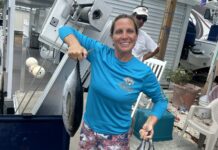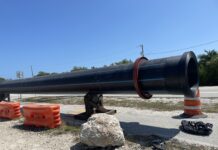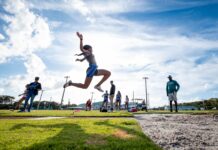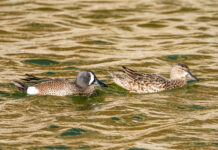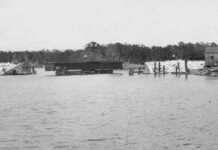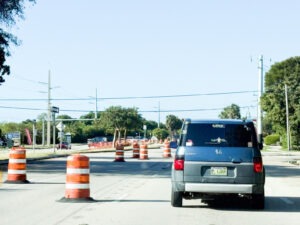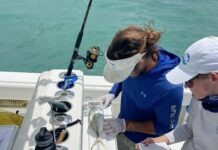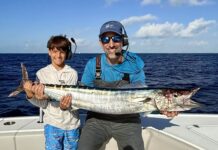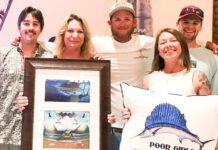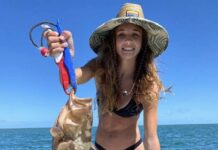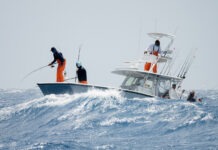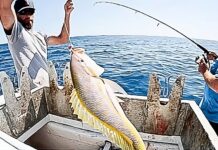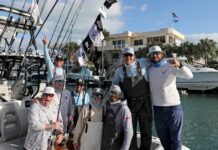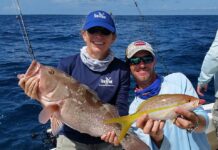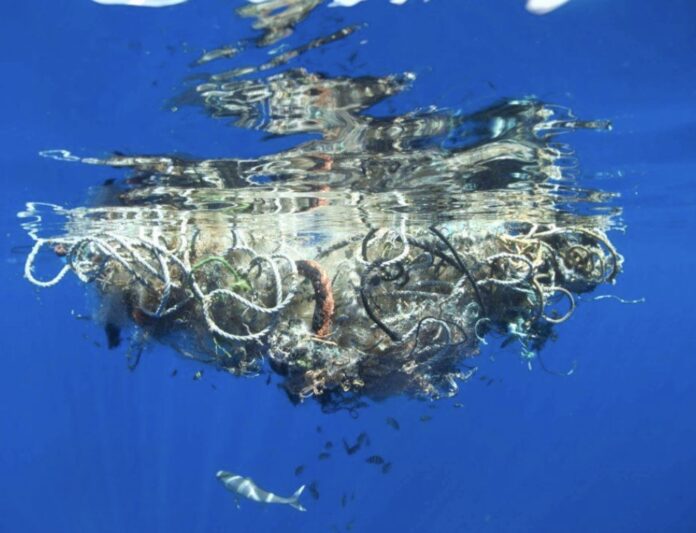
As we are heading offshore, I commonly tell my clients we are looking for four things. Number one: birds – the bigger and blacker the better. Number two: an organized weed line. Number three: a floater, which I define as anything floating on the surface bigger than a water bottle. Number four: a boat that may have found what we’re looking for, so we can do some “monkey see, monkey do.”
In the recent past I have written about how to read birds and troll under birds. I’ve also written about what weed lines to look for and how to troll next to them. Now I’m going to write about floaters.
Some of the floaters we find offshore are tree parts, migrant vessels, tangled ropes and buoys, jugs, barrels, boat and plane debris, pallets, boat cushions – and yes, “packages.” The reason a floater is so important to find is that when a large object is floating in the ocean, it’s like an oasis in the desert. Schools of bait fish hang out underneath the floater to get shade, avoid predators and eat smaller organisms that live underneath. Many large floaters have an entire ecosystem under them from the surface of the water straight down to the bottom of the ocean.
Here is how I fish most floaters: The first thing I do is troll ballyhoo and plastic baits past the floater. Most of the time I’ll catch several fish trolling past the floater, and as long as I’m hooking fish, I keep trolling. At some point, we either catch them all or the ones still there are “educated” and not eating.
Regardless of the reason, when the bite stops and I’m not catching any fish trolling, the next thing I do is I stop my boat a few feet off of the floater and chum with live bait fish or chunks of ballyhoo and squid. Sometimes that brings game fish up from the deep and we start catching them as they are feeding on our chum.
Once the bite stops and we don’t see fish coming into our chum, we stop chumming and start vertical jigging. We jig with a medium size vertical jig with a six- or eight-inch wire leader attached between our main line and our vertical. We drop the vertical jig under the floater and let it sink for a count of 80 Mississippi. Once you’ve counted 80 Mississippi, start jigging and reeling violently – the more violent the better. We catch a lot of wahoo vertical jigging under floaters.
Earlier, I mentioned that the fourth thing we look for is another boat that may have found what we’re looking for and do “monkey see monkey do.” That doesn’t mean that we find another boat and do a hostile takeover on his floater. In my opinion, you should stay at least a football field away from the floater until the other boat is done fishing.
I’ve had several incidents in the past few weeks of captains racing in for what I felt were “hostile takeovers” of floaters where I was trolling. I figured out a long time ago that yelling and screaming might make you feel better, but usually doesn’t solve any challenges.
Here’s an example of the right way to come in on someone’s floater: Last year, I found a floater that was an old barnacled-up half-sunken kayak in about 600 feet of water. I caught several mahi off of it, chummed it and vertical jigged it. Captain Chris Still, owner of the Tackle Box and a local charter guide, was trolling around me three football fields away, catching a few mahi and watching us. I eventually waved him in, and he asked me if I minded him trolling next to it. I told him yes, no problem. On his first troll past it he caught a nice wahoo. I wasn’t upset, and just like the preacher I take fishing says, “Sometimes it just be like that.” Anyway, captain Chris handled his approach patiently, courteously and professionally.
Keep your eyes peeled for those oases in the desert.
To book a charter with Ana Banana, call or text Capt. Joel at 813-267-4401 or Capt. Jojo at 305-879-0564, or visit anabananafishing.com.






